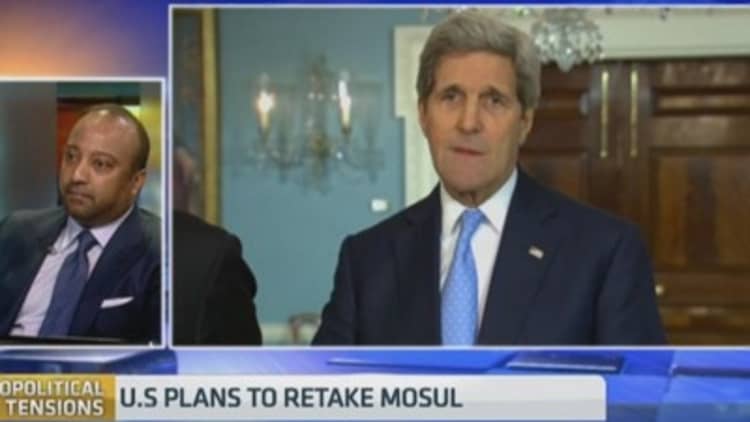NATO warships conducted rapid reaction drills in the Black Sea this week, and the alliance's chief accused Russia of continued aggression in Ukraine. Meanwhile, NATO member states continue to battle ISIS extremists, who insist their goals include sacking Rome.
The North Atlantic Treaty Organization is more relevant than it has been for years. But many of its members are moving further away from meeting their defense spending obligations.
"[NATO] feels more highly relevant to contemporary challenges—more so than it has been since the end of the Cold War," said Kathleen McInnis, a NATO and coalition warfare expert at Chatham House, a London-based policy institute. She explained that despite geopolitical worries that pervade much of Europe, many member states have struggled to make increased defense spending politically palatable.
Problems with military funding have plagued the alliance for years, but they are becoming more serious as threats on the periphery of Europe grow.
"The geopolitical reality surrounding Europe and surrounding NATO is changing so much, it's not clear that NATO members can waffle their way through this again," McInnis explained.
Read More NATO: CNBC explains
An agreement struck during the NATO summit in Wales last September reaffirmed members' commitment to spend at least 2 percent of their gross domestic product on defense. The declaration said that NATO countries already meeting that spending level—a group that included only the United States, United Kingdom and Estonia—will continue to do so. And it said that nations under that 2 percent bar will halt spending declines and move toward the guideline within a decade.
Although the 2 percent level may seem arbitrary, it is "probably the absolute minimum modern countries can pay" in order to maintain adequate security, according to Anthony Cordesman, the Arleigh A. Burke Chair in Strategy at the Center for Strategic and International Studies.
But, as the European Leadership Network, a U.K.-based think tank, noted in a recent paper, at least six countries in NATO are expected to decrease their military spending: the U.K., Germany, Canada, Italy, Hungary and Bulgaria.
The U.K.'s defense spending decrease—projected to fall from 2.07 percent of GDP to about 1.88 percent this year— is a "worrying signal," McInnis said, as it's usually considered the strongest military in Europe.
"How concrete is the defense spending pledge if the U.K. goes under?" McInnis added.
Europe's other main military power, France, is expected to slightly increase its 2015 defense spending over the previous year—from $40.9 billion to $41.2 billion—but with those figures the expenditure would remain static at 1.5 percent of GDP.
Read More NATO rattles cybersabers—but experts have doubts
One issue limiting European security spending is simply that domestic concerns often take priority in the political sphere. A 2014 study on trans-Atlantic trends from the German Marshall Fund of the United States found that pluralities of citizens throughout Europe named economic problems as the chief issue facing their country. (Russian respondents were the only ones that cited "international instability" as the most important concern.)
Despite political pressure on lawmakers to cut budgets, experts told CNBC that the ongoing geopolitical instability calls for more defense spending.
"Whatever the pressures and complexities, however, the freeze of, or decrease in, the defense budgets of these countries is resulting in dangerous underfunding for infrastructure and equipment projects and is damaging what is left of the European pillar of NATO," the ELN analysis said.

Some European countries are increasing their defense spending, however, especially the Baltic states—Latvia, Lithuania and Estonia—which worry about Russian expansionism. Those nations' combined spending represents a relatively small portion of NATO's total capabilities, but experts said it demonstrates a commitment to facing growing risks.
According to the latest estimates from ELN, U.S. contributions are about 75 percent of NATO defense spending. But even American defense spending is shrinking as a percentage of GDP—although it is expected to grow slightly in real numbers—with a projected fall from 3.6 percent last year to 3.4 percent in 2015.
—Reuters contributed to this report.


